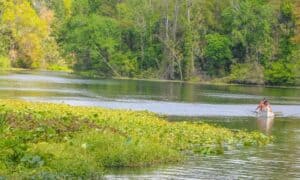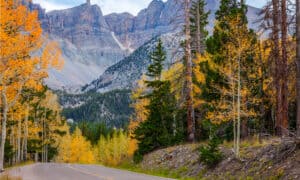Missouri is not as well known for its national parks as other states, but that doesn’t mean it doesn’t have plenty of scenic beauty to offer. There are four national parks in the state, working to preserve their land, historical landmarks, and wildlife. When visiting this state, you might run into any number of birds, deer, lizards, and snakes. The state is home to hundreds of bird species, including hawks, blue herons, cranes, and meadowlarks.
In a study from Environmental Management, researchers found that many people who visit these parks do so to enjoy outdoor recreation or time with their families.
1. Ste. Geneviève National Historical Park
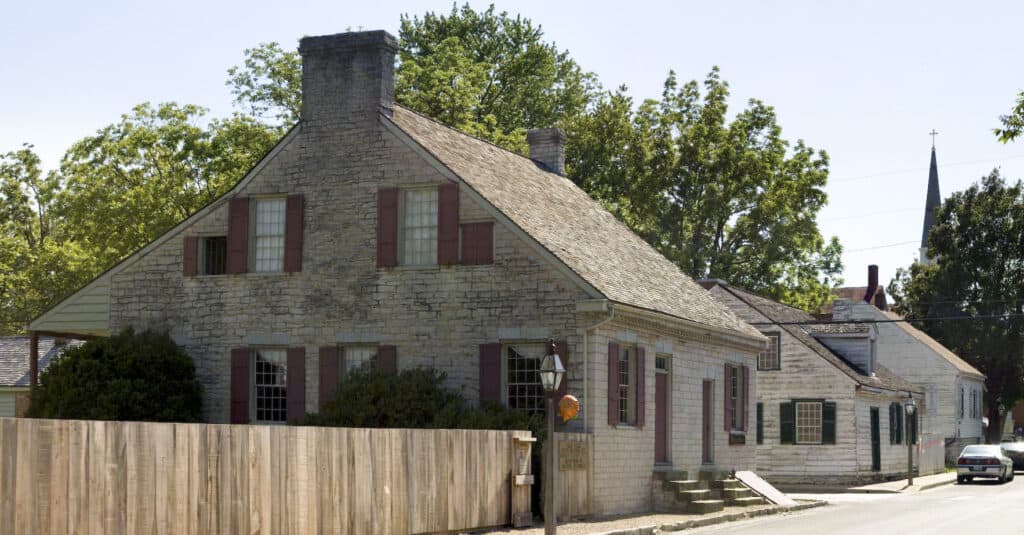
Ste. Genevieve was formally established as a National Historical Park and a member of the National Park Service on October 30th, 2020.
©Andrew Balet / Creative Commons – License
| Ste. Geneviève National Historical Park | |
|---|---|
| Size | – |
| Animal to see | Meadowlarks |
| Attraction to see | The Amoureux House |
Ste. Genevieve was established in 1750 and was the first permanent European settlement in the state. The early French-Canadian settlers who founded the area were drawn in by the rich and diverse agricultural land known as Le Grand Champ, which translates into The Big Field. While the town relocated after a major flood in 1785, the site is still of immense historical significance and is conserved for the enjoyment of those who visit today.
Ste. Genevieve was formally established as a National Historical Park and a member of the National Park Service on October 30th, 2020. While it is one of the newest national historic parks, there are multiple projects for beautification and preservation that allow the town and nature found around and within to thrive.
A rare site of French-Creole architecture can be found in the town of Ste. Genevieve, in the Amoureux house. Built in 1792, the house is one of only three known surviving style houses in Ste. Genevieve, and is known to have significant historical value as one of the first (and last) remaining homes in the original settlement.
Within the national park is the Ste. Genevieve Levy wildlife refuge. Here you can find birds, plants, or fish native to the area. You may see deer or opossums passing by, and may even be able to catch a glimpse of the meadowlarks or herons that fly through and reside in the national park.
2. George Washington Carver National Monument

The monument of George Washington Carver resides on a 240-acre farm preserved in honor of Carver’s contributions to agriculture.
©iStock.com/zrfphoto
| George Washington Carver National Monument | |
|---|---|
| Size | 240 acres |
| Animal to see | Deer |
| Attraction to see | George Washington Carver National Monument |
Established in honor of George Washington Carver, the George Washington Carver State Park boasts a monument that attests to the American historical figure, George Washington Carver, and his lifelong interest in agriculture and ecology from an early age. Known as the “plant doctor,” Carver was always influenced by his quest for education to become a renowned agricultural scientist, educator, and humanitarian.
The monument of George Washington Carver resides on a 240-acre farm preserved in honor of Carver’s contributions to agriculture. The farm was the birthplace and childhood home of George Washington Carver. He was the first person ever to be awarded the honor of a designated national monument other than a United States president.
The park houses a multi-level visitor center facility that includes a museum, gift shop, theatre, classrooms, interactive exhibit areas, additional restrooms, a museum collection storage facility, a library, office space, and a large multi-purpose area that can also serve as a tornado shelter in cases of emergency.
Those who choose can take a self-guided tour and witness the spectacular wildlife in the woodlands of George Washington Carver State Park. You can hear songbirds in the prairies and view deer visiting the monument grounds in the morning. You may even catch a glimpse of a blue heron in the pond.
3. The Ozark National Scenic Riverways

The Ozark National Scenic Riverways, inside the Ozark National Park, provided the first national park area to protect a river system.
©iStock.com/StevenSchremp
| The Ozark National Scenic Riverways | |
|---|---|
| Size | 80,000 acres |
| Animal to see | Wild turkey |
| Attraction to see | Alley Mill |
The Ozark National Scenic Riverways, inside the Ozark National Park, provided the first national park area to protect a river system. The Current and Jacks Fork rivers and hundreds of freshwater springs, caves, trails, and historic sites, are all part of what makes the Ozark National Park so unique. Hundreds of historic structures are found within the Ozark National Riverways, including the Alley Mill. By protecting this landmark, the Ozarks preserve the heritage of all Americans.
The alley mill was seen as a gathering place, home, farm, and school for people who inhabited this land a century ago. The mill was vital to community life and, at present, serves as a reminder of the peace and harmony that those within shared at this site.
When traveling to the Ozark national forest, one is likely to see animals such as Missouri feral hogs and black vultures, as well as other species such as white-tailed deer and wild turkey, while at least 198 species of birds can be seen residing near or flying over the scenic riverways. The Ozark National Scenic Riverways preserves the upland forest, aquatic, and subterranean habitats for wildlife. These habitats are home to a range of unusual animals known in the Ozarks. Amongst these animals are the collared lizard, as well as tarantulas and scorpions.
4. Wilson’s Creek National Battlefield
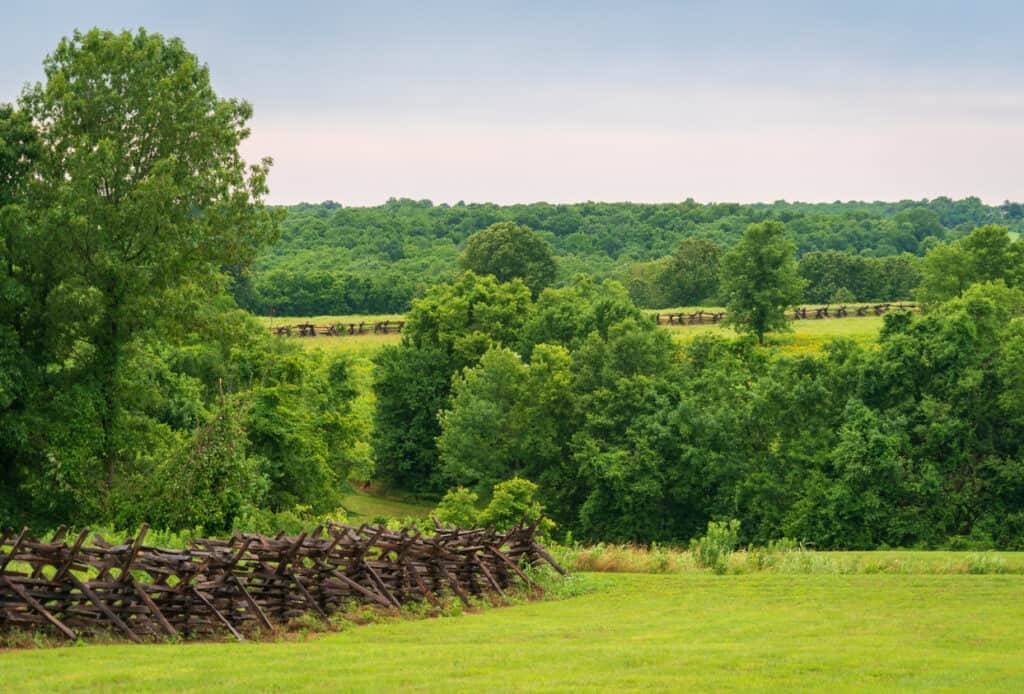
Wilson’s Creek was established to memorialize the first major battle fought in the area.
©iStock.com/zrfphoto
| Wilson’s Creek National Battlefield | |
|---|---|
| Size | 2,407.79 acres |
| Animal to see | White-tailed deer |
| Attraction to see | Wilson’s Creek National Battlefield |
Focusing national attention on the Civil Wars’ impact on Missouri, Wilson’s Creek was established to memorialize the first major battle fought in the area. With it also came the death of Nathaniel Lyon, who was the first Union general to be killed in action. Wilson’s Creek commemorates the battle within the context of the war and the trans-Mississippi West through its preservation of the land and history at this site.
Like many civil war battlefields, Wilson’s Creek hosts a wide range of wildlife, such as white-tailed deer along the tour road. When exploring the trails, you can view several wildflowers, including the threatened Missouri bladderpod. It is also possible to see warblers and hawks throughout the park and many types of invertebrates and fish in the water.
The Heartland Inventory scientists have found over a hundred different bird species in 13 years of surveys at this national battlefield. While many of them are in decline in the region, changes are in effect to keep the battlefield as a safe sanctuary for these creatures and all other animals that inhabit the land.
5. Mark Twain State Park
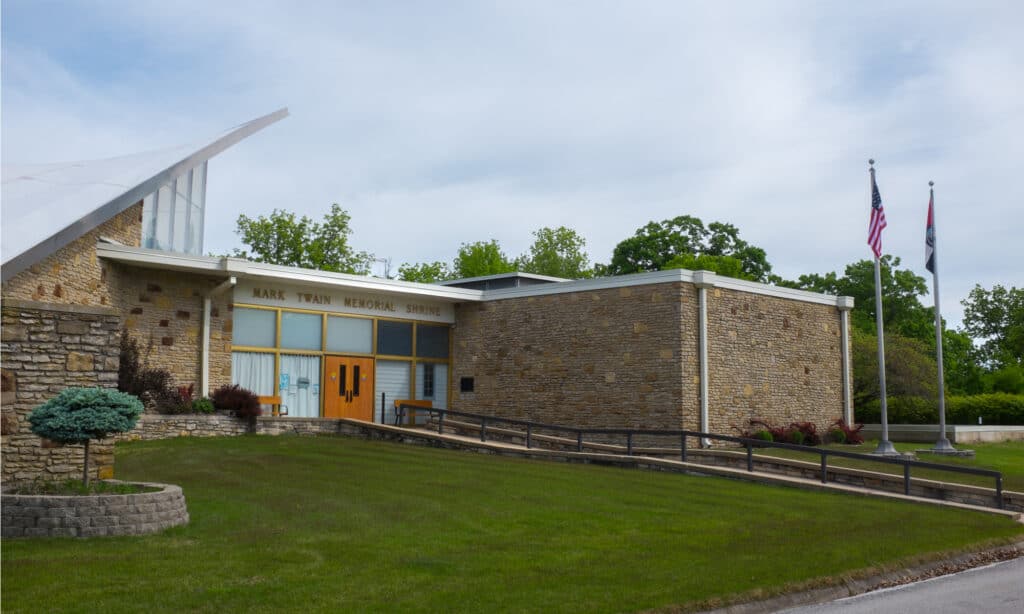
Mark Twain State Park protects many animal species native to the state.
©Joseph Kreiss/Shutterstock.com
| Mark Twain State Park | |
|---|---|
| Size | 2,775 acres |
| Animal to see | Hawk |
| Attraction to see | Mark Twain Birthplace State Historic Site |
The Mark Twain State Park in Missouri spans around 2,775 acres of land and protects many animal species native to the state. When in the state park, you can pay a visit to the Mark Twain Birthplace State Historic Site to see the place where this iconic author was born. There are several places to enjoy hiking, camping, swimming, kayaking, and more water recreation options. When exploring this park, you might come across white-tailed deer, wild turkeys, snakes, songbirds, etc.
6. Ha Ha Tonka State Park
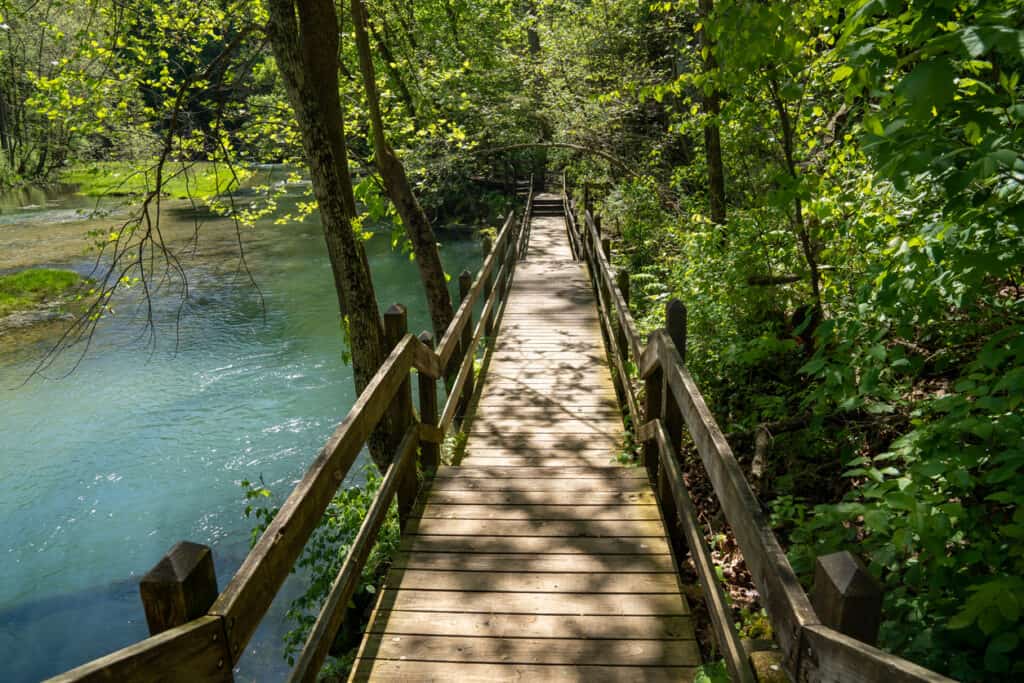
Ha Ha Tonka State Park is located near the Lake of the Ozarks.
©iStock.com/Melissa Kopka
| Ha Ha Tonka State Park | |
|---|---|
| Size | 3,751.74 acres |
| Animal to see | Songbird |
| Attraction to see | Lake of the Ozarks |
Five miles away from Camdenton, Missouri, you can find Ha Ha Tonka State Park. This park covers over three thousand acres of land and is located near the Lake of the Ozarks. It protects numerous native Missouri species, from deer and coyotes to snakes and songbirds. While exploring this state park, you can enjoy several recreational activities. These include hiking, kayaking, and camping.
The photo featured at the top of this post is © Joseph Kreiss/Shutterstock.com
Thank you for reading! Have some feedback for us? Contact the AZ Animals editorial team.




